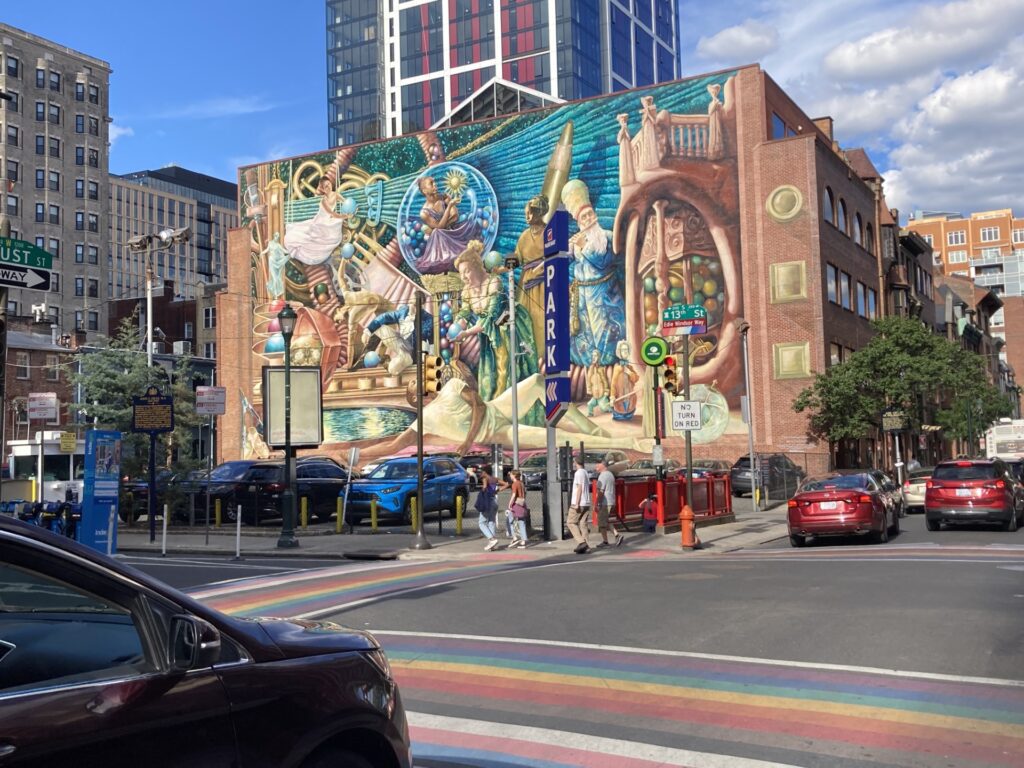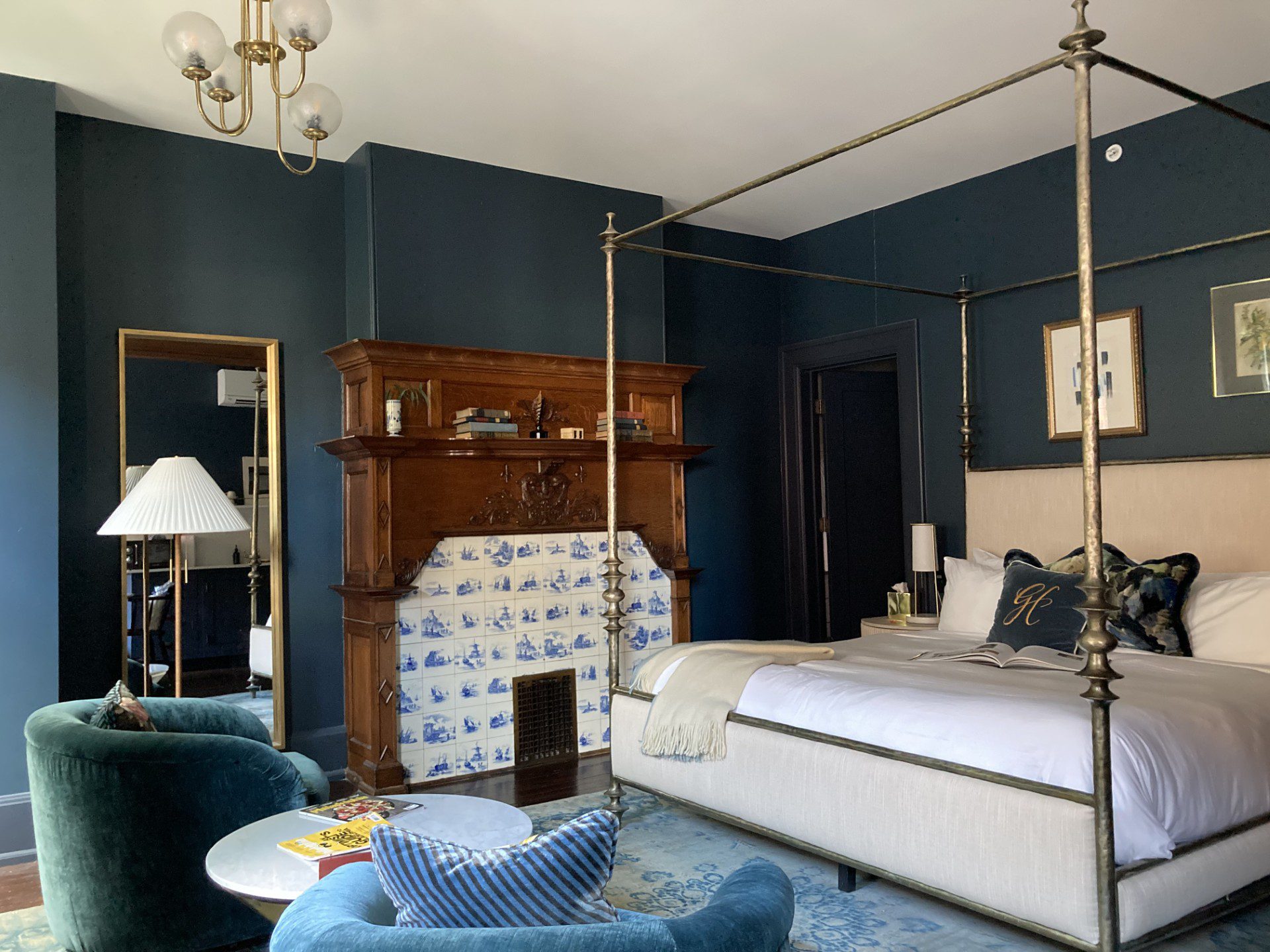

June 24, 2024
The Georgetowner
For those planning to visit the Philadelphia Museum of Art this month to see “Mary Cassatt at Work,” here is a performing arts roundup and a lodging option.
First, let’s get oriented. In 1682, William Penn and surveyor Thomas Holme plotted out the City of Brotherly Love as a flat grid of streets and squares between two rivers: the Delaware on the east and the Schuylkill (local pronunciation: “SKOO-kul”) on the west. With a statue of Penn topping its tower, City Hall, completed in 1901, dominates the intersection of east-west Market Street and north-south Broad Street.
The Benjamin Franklin Parkway, the city’s gently rising Champs-Élysées, was cut through the grid between 1917 and 1929; it runs diagonally northwest from City Hall to the 72 “Rocky” steps of the art museum.
South of City Hall, Broad Street is Philadelphia’s Avenue of the Arts, home to the Academy of Music, the Miller Theater, the Kimmel Center for the Performing Arts, the Wilma Theater and the Philadelphia Theatre Company’s Suzanne Roberts Theatre.
Playwright Kate Scelsa was inspired to create an opera about Swedish artist Hilma af Klint after seeing the 2018-19 exhibition “Hilma af Klint: Paintings for the Future” at the Guggenheim Museum. The Wilma Theater (265 S. Broad St.), recipient of a 2024 Regional Theatre Tony Award, is presenting the world premiere of “Hilma,” with music by Robert M Johanson, directed by Morgan Green, through June 23.
Part of a women’s spiritualist collective called The Five, af Klint envisioned a spiral temple decorated with symbolic paintings. Beginning in 1906, hundreds of works were created at her direction, channeling instructions from beings she called the High Masters. These works, among the earliest purely abstract paintings and drawings in Western art, were to be kept from public view until 20 years after her death, in 1944. Since the Guggenheim show, these astonishing creations have become widely known.
The Wilma production sticks to the story, more or less, in the first act, set in Stockholm between 1896 and 1912. After that, look out! The second act, which takes place on “the astral plane,” a gigantic multilevel eye, feels like the dawning of the Age of Aquarius. And the third act begins, deceptively, as a cast talkback. If you have a yen for experimental opera, don’t miss “Hilma” at the Wilma.
Another theater option: “The Duat,” Philadelphia Theatre Company’s world-premiere “poetic and virtuosic story of redemption” about an FBI counterintelligence officer, written by Roger Q. Mason and directed by Taibi Magar, is playing through June 23 at the Suzanne Roberts (480 S. Broad St.).
Also on the Avenue of the Arts: Ben Platt of “Dear Evan Hansen” performing his new album, “Honeymind,” on Friday, June 21, at the Academy of Music (240 S. Broad St.); Max McLean’s “C.S. Lewis On Stage: Further Up & Further In” on Saturday, June 22, at the Miller Theater (250 S. Broad St.); and the Philadelphia Orchestra’s free but ticketed “Pride Concert” — with ANNA Crusis Feminist Choir, the Philadelphia Gay Men’s Chorus and Philadelphia Voices of Pride performing works by Bernstein, Copland, Higdon, Tchaikovsky and others — on Tuesday, June 25, at the newly renamed Marian Anderson Hall at the Kimmel Center (300 S. Broad St.). Principal Guest Conductor Designate Marin Alsop will conduct.
The Philadelphia Orchestra also performs at the TD Pavilion at the Mann in Fairmount Park. On Tuesday, June 18, Austin Chanu will conduct a “Tchaikovsky Spectacular.”
The “Pride Concert” is a reminder that June is Pride Month. Philly held its 2024 Pride Parade on June 2, but the flags are still flying in Midtown Village, also known as the Gayborhood, a 20-block area with rainbow crosswalks and LGBTQ+ murals and historical markers. Just to the east of South Broad Street, the Gayborhood extends to 11th Street, between Chestnut and Pine Streets. The main drag (so to speak) is 13th Street, lined with shops and restaurants.

The Gabrielle Suite at Guild House. Photo by Richard Selden.
Named for James Baldwin’s 1956 novel, Giovanni’s Room (345 S. 12th St.), which opened on South Street in 1973, is said to be the nation’s oldest operating LGBTQ+ bookstore. At this location since 1979, it has been run for the past 10 years by Philly AIDS Thrift.
A unique addition to the Avenue of the Arts hotel scene is Guild House (1307 Locust Street), an “invisible service operation” — meaning no onsite staff — in a four-story row house built in 1851. For 100 years, beginning in 1906, it was the headquarters of the New Century Guild, a club for working women dating to 1882. (Rebranded as Gender Justice Fund, the New Century Guild relocated north to Cherry Street.)
Each of Guild House’s 12 rooms and suites honors a club member. I stayed in the spacious Gabrielle suite, named for club co-founder Gabrielle de Veaux Clements, whose lifelong partner was Ellen Day Hale, daughter of prominent Boston minister and U.S. Senate chaplain Edward Everett Hale. The two painters and printmakers, who met at the Pennsylvania Academy of the Fine Arts, were part of artistic circles in Charleston, South Carolina, and Cape Ann, Massachusetts.
There is period décor throughout and a pleasant lounge on the first floor. Elegant touches abound. One reaches the higher floors via an impressive central staircase; there is no elevator, but luggage can be sent upstairs on a dumbwaiter. The Historical Society of Pennsylvania and the Library Company of Philadelphia are across Locust Street and next door is a “Magical Pub & Experience” called the Cauldron.
Finally, speaking of pubs, Philly’s oldest continuously operating place of refreshment — since 1860, when Catherine and William McGillin opened the Bell in Hand Tavern — is McGillin’s Olde Ale House (1310 Drury St.), tucked away in one of the Gayborhood alleys between the Center City streets named for species of trees.